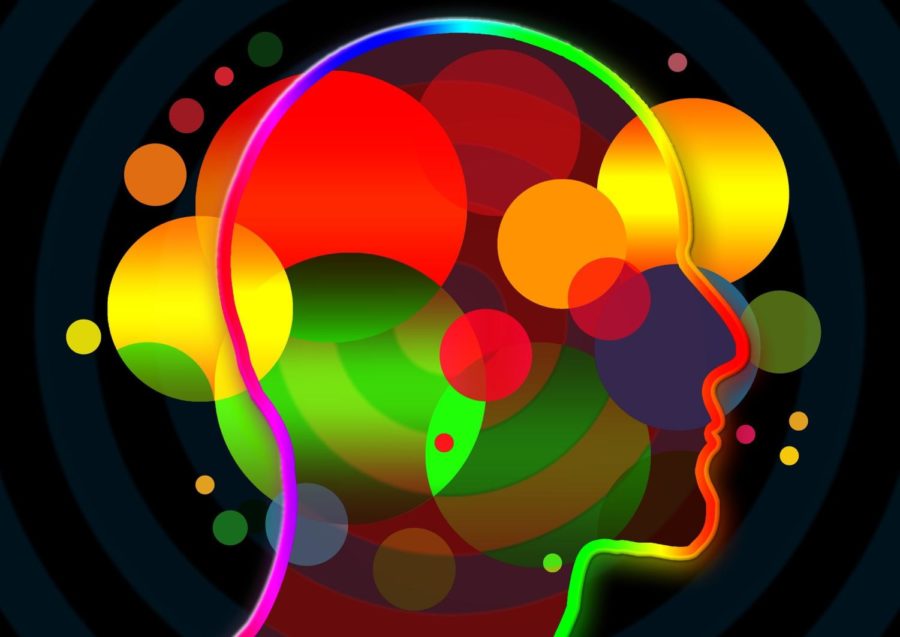Carl Jung Walked, So Myers-Briggs Type Indicator Could Run.
How we interact with each other, and the environment around us, is different depending on the person. We have our own way of thinking, feeling, and behaving. We develop our personalities and change them, however, we “like” as we experience new things in different environments.
The word “personality” originates from the Latin word, “persona,” meaning mask. In psychology, a mask is often seen as a way a person hides who they truly are, by presenting themselves as someone they are not. Using a persona is common, as it’s used all the time, someone can also have multiple personas.
For some people, figuring out their personality can be challenging, because it’s hard to define and differentiate between a real personality and the persona the person may use. By simply searching up, “personality test,” on Google, you can get thousands of websites that offer to figure out your personality for you with a short or long questionnaire. However, the most popular test you will find is the Myers-Briggs Type Indicator, which is commonly abbreviated to MBTI. It has become a trend on social media, and in work environments, to take this test. It is still popular among people who are into typology. Although MBTI is not the most reliable and credible typology system in most cases, people who take the MBTI personality test do it for fun out of curiosity of the result they will get. They often do not know the history behind how MBTI became popular. There are many more systems like enneagrams, socionics, temperaments, and the “Big5″/SLOAN that are used alongside MBTI just to name a few.
Carl Gustav Jung is most known for his work in founding the analytical psychology movement, and how it influenced fields of literature, philosophy, religion, psychology, and more. Jung theorized that the main parts that make up a personality are the conscious and unconscious mind, and the ego. Dr. Saul McLeod states, “According to Jung, the ego represents the conscious mind as it comprises the thoughts, memories, and emotions a person is aware of. The ego is largely responsible for feelings of identity and continuity.” In modern society, ego is how a person views and distinguishes themselves from others around them, it can be shortly summarized as something very similar to self-esteem or self-image. They can impact the way a person feels about themselves and how they think and behave.
Jung was one of the first people who became known for talking about introversion and extroversion. He described introversion as being oriented and focused on the internal world, while extroversion is the opposite and focused on the external world. They are two ends of a spectrum, and Jung believed that no one is on the complete end of any side of the spectrum- but that everyone has a higher level of one and a lower level of the other. To this day, someone who has equal amounts of extroversion and introversion is still called an ambivert. More extroverted people get most of their energy socializing and being stimulated, while more introverted people are often misunderstood as shy. They tend to regain their energy by being alone and not stimulated, because they get tired easily socializing too much at a time. While Carl Jung was most likely not the first person to talk about extroversion and introversion, he certainly helped develop the concept. He theorized that people live among the world using four principal psychological functions which are sensation, intuition, feeling, and thinking. Scott Schwefel explains that Jung proposed that there were two cognitive functions, the rational function which judges by thinking and feeling, and the irritation function which perceives by sensing and intuition. Jung’s theory and work were not based on scientific studies, but rather, on observations. His study on personalities contributed and impacted the growth of the Myers-Briggs Type Indicator.
Psychologist Hans Eysenck says that the MBTI, “creates sixteen personality types which are said to be similar to Jung’s theoretical concepts.” Eysenck tests this claim, because Jung’s theory has thirty-two types. He believed that for every conscious personality type there is an unconscious type that is the opposite. Katherine Cook Briggs, and her daughter Isabel Myers Briggs, contributed their ideas to Jung’s theory. Their concept was that the fourth letter in a type, which is judging or perceiving, shows which extroverted function a person leans towards.
The websites, where anyone can take the MBTI test to present an individual, has a questionnaire with a four-letter result, which has four different parts to it. INTP and ESFJ are two of the sixteen personality types that the Myers-Briggs Type Indicator offers. Most of the concept behind the MBTI is based on the theory and work of Carl Jung. The four categories that make up the MBTI are introversion (I) or extroversion (E), sensing (S) or intuition (I), thinking (T) or feeling (F), and judging (J) or perceiving (P), which total to eight functions. Of each category, the MBTI tests which one you lean more on, out of two.
The result someone gets by taking a Myers-Briggs Type Indicator test can tell you what type of person you are and what your personality is most suitable for. Even though the test has been criticized for not being backed up by any scientific evidence and lumped in with the same concept as astrology, people have used it to find what type of people they are, what type of situations they do well in, and whom they should befriend. There are websites where you can search for popular celebrities, jobs, animals, and more to find what MBTI any of those topics are. On a website called the Personality Database, users of that website can vote for the MBTI and more typologies for a certain profile. Oprah Winfrey took the MBTI test herself, and got ESFP, but on that website over 600 people have voted and according to the Personality Database, out of the 600, 293 people voted that she is an ENFJ. This means that Oprah is focused on others, and how they are feeling around her, instead of focusing on her own emotions.
Many sources have called out on the MBTI test calling it useless, “one of the worst personality tests in existence”, and even compared it to a Chinese fortune cookie. Disregarding these claims, there have been many experiments and studies using the MBTI test. In 1973 there was a study conducted by MacKinnon and his associates at the Institute for Personality Assessment on United States universities, where students who were studying Fine Arts and Art Education subjects, were found to be mostly INFP. Another study by Earl Smith in 1973, studied teachers in the United States, found that MBTI types that were both intuitive (N) and perceptive (P) were high in numbers in the subjects like English and Social Studies. More sensing (S) and judging (J) types were featured for subjects in science and mathematics. “A study of 27,787 high school students showed that the majority of students who got INFP showed a significant presence in the subjects regarding art, English, and music,” according to Charles Sides.
If you are interested in typology, Myers-Briggs Type Indicator is a good beginner system to dive into! The tests I recommend are Michael Caloz, keys2cognition, similarminds, and Sakrinova. These are certainly not the only tests, but are the ones I found to be most common and more, “reliable,” than the other ones out there (Anything but the 16personalities test because that one is notorious for mistyping people). I do not think you should take a test’s results and make it 100% your typology! However, it is a good start to getting to know your personality, and researching cognitive functions, and the other systems, to research the best ways to type yourself.











